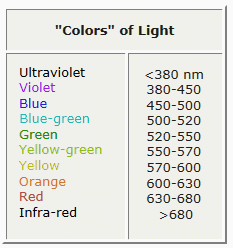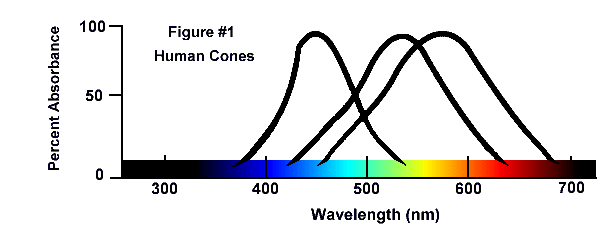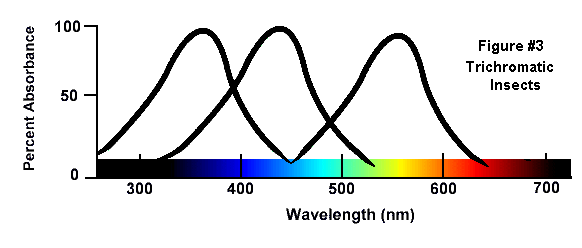Color Vision
 The chemical basis of vision depends upon the absorption of light (electromagnetic radiation) by special pigments in the eye. These pigments are transducers: they convert electromagnetic energy into the chemical energy that can initiate (stimulate) an impulse within a nerve cell (neuron). In human eyes, the visual pigments are manufactured and stored in the rods and cones of the retina. In insects, all visual pigments are manufactured by retinula cells; they are stored in the rhabdoms of the compound eyes and ocelli.
The chemical basis of vision depends upon the absorption of light (electromagnetic radiation) by special pigments in the eye. These pigments are transducers: they convert electromagnetic energy into the chemical energy that can initiate (stimulate) an impulse within a nerve cell (neuron). In human eyes, the visual pigments are manufactured and stored in the rods and cones of the retina. In insects, all visual pigments are manufactured by retinula cells; they are stored in the rhabdoms of the compound eyes and ocelli.
Not all visual pigments are alike. Rhodopsin, the pigment found in human rods, absorbs a wide range of electromagnetic frequencies (colors) from blue to yellow. There are three types of cone pigments (iodopsins) that are somewhat more selective — each has an absorbance maximum that correspond to one of the three “primary” colors: blue, green, or red. Our ability to discriminate a full range of color is based on the additive response of all three receptor types. (Figure #1).




